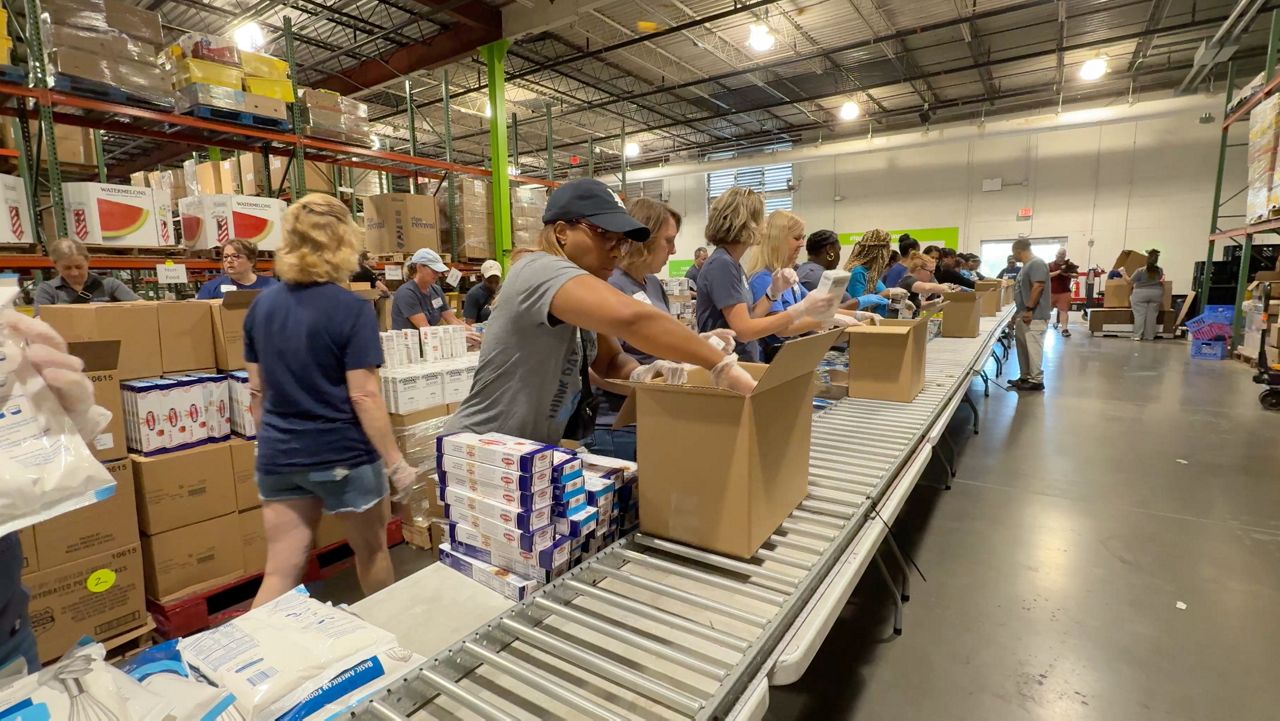Detroit, MI
Mark Woods: More to downtown revival than a stadium. Look at Detroit and its riverfront.
A follow-up to my last column, about how it would be a shame if we can find money for renovating a stadium but not for finishing our riverfront parks.
I recently went to Detroit. My sister, an engineer for GM, lives and works north of the city. Her son was graduating from college and she knew how to further entice me to make the trip: The Tigers, the baseball team my childhood revolved around, were in town.
It had been years since I went to a game in Detroit. It was a beautiful April night, with a lot for people there to cheer about. And not just because the Tigers rallied to beat the Kansas City Royals at Comerica Park.
At one point, the fans began a chant of “Jared Goff, Jared Goff” — the Lions quarterback who plays his home games in nearby Ford Field — that wasn’t as random as it sounded.
It was the weekend of the NFL draft. The league estimated that nearly 800,000 fans filled downtown over the three days, setting the attendance record for the event. The streets were packed with people eating, drinking and checking out shops brimming with Detroit pride. Shinola watches and bikes. “Made in Detroit” T-shirts. Merchandise that said both “Detroit Welcomes Everybody and “313 vs. Everybody.”
The 904 isn’t the only place that can lean into its area code and a sense of being the underdog.
Downtown Detroit on the rise
It reminded me of when we had the Super Bowl in Jacksonville, how during that one week our streets and riverfronts were full of people and activity. I couldn’t help but wonder what downtown Detroit would be like once the big event left.
There’s reason to believe it wasn’t just a one-weekend thing.
Detroit, for all of its problems, has experienced a rebirth.
Downtown is a different place than what I remember, and what many Americans still picture: a hollowed-out, crime-ridden, decaying shell of a once-vibrant city.
That’s not to say Detroit doesn’t still have plenty of issues. But it also has reason for hope — and reasons for people to be living, working and playing downtown.
In the 1990s, when I covered the Tampa Bay Buccaneers, I made a trip to Detroit every fall for a Bucs-Lions game. Well, sort of. I flew into Detroit, got a rental car and drove about an hour north to Pontiac and the Silverdome. At the time, the NBA’s Pistons played even farther from downtown, in the Palace of Auburn Hills.
Now four major pro franchises play downtown: the Tigers at Comerica (opened in 2000), the Lions at Ford Field (2002), and the Pistons and NHL’s Red Wings at Little Caesars Arena (2017). Also, soccer club Detroit City FC is planning to build a new stadium in Corktown, an old neighborhood described in a recent Detroit Free Press story as the “front porch to downtown.”
It’s tempting to point to Detroit as an example of how building sports venues can transform a place. But while those venues certainly have been a part of what is happening in Detroit, it’s worth noting a few things (beyond sports economists saying stadium building has a dubious return on investment for a city), particularly in regards to Jacksonville.
It’s vastly different to have an MLB stadium (with at least 81 home games a year) and an NBA/NHL arena (the two teams combining for at least 82 home games a year) along with an NFL stadium. Between the three venues and four teams, downtown Detroit has games year-round that, even before you add in concerts and other events, draw nearly 4 million people.
And what is happening in Detroit involves much more than sports venues.
One of America’s best riverwalks
Ask people in Detroit what has changed and, beyond the sports venues, they’ll point to the billions of dollars invested downtown by Dan Gilbert (founder of Rocket Mortgage), the Ford family (as in Ford vehicles) and the Illitch family (Little Caesars pizza).
And — particularly relevant to Jacksonville — look at what Detroit has done to stake a claim to having one of America’s best riverfronts.
Yes, Detroit.
“Ignore the Noise: The Transformation of the Detroit Riverfront,” an hourlong documentary released last year, paints a bleak (and familiar) picture of what their riverfront had become. Desolate, blighted, industrial, buildings in disrepair, empty lots. It was, one of the subjects says, not a place that anyone had any reason to visit.
For decades, there had been plans for a linear park with riverwalks, greenways, playgrounds, events. Not much seemed to come to fruition. Until about 20 years ago.
Look at the Detroit Riverfront Conservancy website today and you’ll find more than renderings of what the riverfront could be someday. You’ll find some remarkable “before” and “after” photos, showing what it actually has become.
In 2021, the Detroit Riverwalk was named the “Best Riverwalk in America” in the USA TODAY 10Best Readers’ Choice Awards. It won the top spot again in 2022. And again in 2023, finishing ahead of Tampa, Louisville, Cincinnati, Boston and Indianapolis.
This isn’t something that happens because you build a stadium or two. It happens because you are determined to build a riverfront — in Detroit’s case, take 5.5 miles between two bridges and turn it into “a beautiful, exciting, safe, accessible, world-class gathering place for all.”
Since 2003, the Riverfront Conservancy, the nonprofit managing the riverfront revitalization, has invested more than $200 million (a mix of donations, grants and public funding). This has been an economic spark, according to the conservancy generating more than $2 billion in investment.
A familiar setback: corruption
I’ve said repeatedly that it would be a shame if we manage to build a shiny “stadium of the future” but fail to do much more than that. And with a stadium deal on the table in Jacksonville — including the community benefits agreement that would provide money for, among other things, riverfront parks — I was planning to write a column pointing to the Detroit riverfront offering some things to strive for here.
Then a funny thing happened. Well, not so funny to those in Detroit.
The Detroit Riverfront Conservancy’s CFO was fired and the CEO resigned after, according to the organization, it discovered the CFO had embezzled more than $40 million.
So we might not want to copy that part. (Not that we really need a reminder of the need for oversight and the potential for scandal where there is money. We’ve recently had both the JEA saga and a Jaguars employee stealing $22 million.)
In a sign of how much has been accomplished on Detroit’s riverfront despite this, two top philanthropic donors responded by reaffirming their support and pledging to give more money to sustain the “transformational projects.” The Detroit Free Press wrote an editorial saying the riverfront and conservancy must survive this — because the riverfront represents “this city’s most dramatic transformation.”
In the documentary, Detroit Mayor Mike Duggan says: “Nothing compares to the beauty that’s being created along the riverfront. … It’s creating a totally different impression to the world about what the city of Detroit is.”
So the point still holds for Jacksonville. It will be a shame if we just build a stadium, expecting that alone to change our city.
If we truly want to create the kind of spark that comes from riverfront parks, we should do the obvious: Invest in riverfront parks.
mwoods@jacksonville.com
(904) 359-4212

Detroit, MI
After a disastrous inning vs. the Guardians, Tarik Skubal and the Detroit Tigers are on the verge of completing an epic collapse
CLEVELAND — It has taken an extraordinary and unlikely sequence of events over multiple months for the Detroit Tigers and Cleveland Guardians to be tied for the AL Central lead with five games left to play. It’s only fitting, then, that the game that secured the deadlock atop the division — Cleveland’s dramatic, 5-2 victory over Detroit on Tuesday at Progressive Field — featured one of the more preposterous half-innings imaginable, the ultimate display of baseball randomness and absurdity.
Entering the bottom of the sixth inning, Tarik Skubal, as usual, was in control. The reigning AL Cy Young Award winner was tasked with reversing the misfortunes of a Tigers team that had seen its once-sturdy lead atop the AL Central completely evaporate over the past month. And for five innings against the rival Guardians — whose spectacularly hot stretch in September combined with Detroit’s skid to culminate in an unexpected division race — Skubal exhibited his trademark ace behavior.
Advertisement
The four-seam fastball was humming, climbing as high as 101 mph. The sinker was exploding into the strike zone at unhittable angles. The slider and knuckle-curve were breaking sharply. And, of course, the changeup was giving hitters fits. When Skubal struck out David Fry with a 99.6 mph heater to end the fourth, he confidently skipped off the mound back toward the dugout, certain another masterpiece was in progress. Cleveland mustered two baserunners in the fifth, but Skubal squashed the threat, finishing the frame with his pitch count at just 74.
[Get more Detroit news: Tigers team feed]
The Tigers had afforded Skubal a two-run lead thanks to a Wenceel Perez RBI double in the third and a Riley Greene solo home run in the sixth. Given how Skubal was throwing, those two runs appeared to be a rather comfortable cushion on which Detroit could rely en route to a victory that would snap its six-game losing streak.
But the Guardians had other plans.
With Skubal dialed in, fighting fire with fire was a fool’s errand, especially given Cleveland’s dearth of offensive thump; the Guardians rank 28th in MLB in slugging percentage, 30th in barrel rate, 30th in hard-hit rate and 30th in average exit velocity. Instead, Steven Kwan led off the sixth with a picturesque bunt on the first pitch from Skubal, racing to first with hopes of sparking a rally.
Advertisement
Before the packed Progressive Field crowd of nearly 30,000 could quiet down after Kwan’s successful gambit, No. 2 hitter Angel Martínez followed with another bunt on the first pitch of his showdown with Skubal. The ball trickled down the first-base line with delicate precision, forcing Skubal to charge and either attempt to make a difficult play or pocket the ball and yield another baserunner with no outs and José Ramírez coming up.
Skubal opted for the former, but in unthinkable fashion: Facing home plate, he reached down, grabbed the ball and flipped it through his legs toward first, as if he were hiking a football. The ball sailed over first baseman Spencer Torkelson’s head and into foul territory, allowing Kwan to reach third base and Martínez to coast into second.
“He was in a tough position as a left-handed pitcher to make that play in general and didn’t want to wheel and throw it down the line,” Tigers manager AJ Hinch explained postgame. “So instead, he chose to do the emergency flip, which is not something that is easy to do, and it obviously didn’t produce a good play.”
Advertisement
Skubal echoed that sentiment, referring to the Martínez ball as an “impossible play” while reiterating his intention to prevent a second consecutive bunt hit at all costs. He also revealed that the between-the-legs toss was something he’d tried before: “Yeah, in Miami, actually,” he said. “Same result.”
Indeed, Skubal attempted a near carbon-copy of the play two years ago against the Marlins, when Jon Berti chopped a ball down the first-base line. The result was nearly identical, but the circumstances couldn’t have been more different. That was in the second inning of a July contest on a Sunday afternoon in Miami. Skubal wasn’t Skubal yet, and the Tigers were 47-59. Trying something like that then? Fine.
But on Tuesday, in the biggest game of the season thus far, with Guardians players and their fans desperate for any ounce of momentum? That was a poor choice.
“That is an example of an uncharacteristic mistake piling up on us at the worst time,” Hinch said.
Advertisement
Of course, this was an exceptionally challenging play for Skubal; expecting him to have recorded an out without trouble feels unfair. That said, his decision to uncork a low-probability toss rather than hold on to the ball and keep Kwan and Martínez at first and second proved extremely costly.
And so, with the bunts having spiked the volume in the venue, up came Ramírez to try to cash in. As Cleveland’s top slugging threat, Ramírez was the one Guardian Skubal didn’t need to worry about attempting a bunt. But baseball has a funny way of surprising you. When Ramírez swung hard at a 99.9-mph fastball with two strikes, the result was roughly the same as the two bunts that preceded it: a weak roller up the third-base line, poorly struck with a harmless exit velocity of 65.5 mph, and too slow for third baseman Zach McKinstry to corral and make a play. Kwan scampered home for Cleveland’s first run. Martínez advanced to third.
The unexpected rally was far from over. But the game took a scary turn before things continued. With still no outs and runners on the corners, Fry came up to the plate. Sticking with the theme of the inning, he squared around to attempt to bunt in hopes of garnering another defensive gaffe. But Skubal’s 99.1-mph fastball ran up and in, hitting Fry squarely in the nose and sending him to the ground.
Advertisement
Although it was ruled a foul ball, replay fairly clearly showed that the pitch didn’t graze Fry’s bat at all, instead making flush contact with his face — a terrifying sequence considering the velocity. The crowd went silent, and players on both teams, including Skubal, were visibly shaken. Thankfully, Fry was able to rise to his feet and get on the cart to be transported to a nearby hospital, where he is expected to remain overnight as he undergoes testing.
“I’ve already reached out to him,” Skubal said afterward. “I look forward to, hopefully at some point tonight or tomorrow morning, getting a text from him and making sure he’s all good. The health of him is more important than a baseball game.”
Guardians manager Stephen Vogt said postgame that Fry stayed conscious the whole time and the team would provide an update as soon as possible on Wednesday.
Advertisement
Such a harrowing injury scare is difficult to move past, but the high-stakes timing forced the two teams to reengage immediately — and it took just one pitch for the chaos to resume. Rookie George Valera replaced Fry in the batter’s box with a 2-2 count, and Skubal’s first pitch to the new batter was a wayward changeup that got past catcher Dillon Dingler and allowed Martínez to score the tying run, with Ramírez advancing to second.
Valera eventually struck out, but then, while facing Gabriel Arias, Skubal balked for just the second time in his career, enabling Ramírez to move to third, still with one out. He then scored easily when Arias tapped one softly to first base, marking Cleveland’s third run of the inning and a lead it wouldn’t relinquish.
Before Tuesday’s sixth inning, Skubal had allowed just one run in 27 innings against the Guardians this season, with 37 strikeouts and just five walks. Then, over the span of five plate appearances — with an average exit velocity of 52.8 mph and without a single ball leaving the infield, except for the one Skubal sailed himself — the Guardians conjured three runs. Because of course they did.
Advertisement
“They showed that the team that made the most contact got rewarded for it, even if it wasn’t great contact,” Hinch said. “They did a good job with that.”
To his point, Detroit’s disastrous inning wouldn’t have loomed quite as large had the Tigers been more productive offensively. But Cleveland starter Gavin Williams had a heck of a night himself, matching a career high with 12 strikeouts over six solid innings of work. Detroit struck out 19 times total Tuesday, the franchise’s most in a nine-inning game since the 2019 club — a team that would go on to lose 114 games — matched the ignominious feat on two occasions.
This Tigers team will not lose 114 games. In fact, this Tigers team might still win the AL Central, despite an unfathomably bad run of play that has them at risk of making history for all the wrong reasons. With the victory Tuesday, Cleveland clinched the season series over Detroit, giving the Guards a critical tiebreaker should the two teams finish with the same record after 162. But there’s still ample opportunity for the Tigers to avoid that fate and fight their way back into enviable playoff position.
Advertisement
“We got to flush today’s game and then get ready to play again tomorrow. The team across the way doesn’t feel bad for us, so there’s no reason we should feel bad for ourselves,” Skubal said. “That opportunity to come out there and win tomorrow and win a series — I think that’s what really matters.”
“We have to get to tomorrow and get to a better result,” Hinch said. “Everybody knows. There’s no hiding behind anything other than showing up ready to play.”
Detroit, MI
Metro Detroit homebuyers face higher prices but more inventory, lower mortgage rates

Eric Vance knows a good house when he sees one.
The 54-year-old contractor from Southfield, who has spent years buying and flipping homes, recently toured a property in Redford Township that immediately caught his attention.
“It was the fireplace and that kitchen,” he said. “Because I am a family man, and it put me right where I needed to be and what I needed to see.”
Buyers like Vance who are looking for a new home are navigating the housing market at a time when inventory, prices and days on the market are on the rise, even as interest rates begin to trend down. Metro Detroit’s housing market saw prices climb modestly in August, even as sales slowed, with the market heading into a seasonal slowdown.
The median sales price across Metro Detroit rose 4.4% year-over-year to $332,500 across Wayne, Oakland, Macomb and Livingston counties, according to the latest RE/MAX of Southeastern Michigan Housing Report. The supply of inventory increased to 2.8 months in August, compared with 2.6 months in July and 2.4 a year earlier, according to the report.
“We are continuing to see a bit more inventory coming into the market that is starting to be reflected in the month supply,” said Jeanette Schneider, president of RE/MAX of Southeastern Michigan. “We’re seeing that inch up a little bit. That’s a signal that we’ve got more and more inventory coming to market.”
The median sales price rose across a broader area — 18 Michigan counties — to reach $289,000 for residential and condo sales combined, according to a Realcomp August sales report, up 5.1% from $275,000 the year before. Realcomp, the state’s largest multiple listing service, looks at Genesee, Hillsdale, Huron, Jackson, Lapeer, Lenawee, Livingston, Macomb, Monroe, Montcalm, Oakland, Saginaw, Sanilac, Shiawassee, St. Clair, Tuscola, Washington and Wayne counties.
The supply of inventory across the 18 counties increased 16%, from 2.5 months to 2.9 months year over year. Pending sales decreased 4.9% from 10,345 to 9,839 year over year, while pending sales increased from 9,778 month over month by 1%. Closed sales decreased 3.7% from 10,530 to 10,138 year over year, and decreased from 10,507 month over month, a decline of 3.5%.
“As we prepare to move from summer into fall, homebuyers have more choices than they have had all year,” Karen Kage, CEO of Realcomp II Ltd., said in the report. “While median sales prices remain fairly consistent, inventory is at its highest August levels in 5 years.”
‘Holding our own’
One notable point in the data was Detroit, which saw its median sales price jump about 16% from last year to a record $111,500, according to Realcomp.
Darralyn Bowers of Bowers Realty in Southfield said the housing market remains healthy in the city and across Metro Detroit: “So far, we’re holding our own, and we’re still seeing property values go up.
“Even in Detroit, we’re seeing growth. Michigan is unique in the Midwest here. We’ve got so many positive qualities, like the water and the amenities and the desirability of Detroit and some of the things that are happening here in Detroit. I think those all accelerate to a better market.”
Nathan Boji, an agent with RE/MAX Classic in Farmington Hills, said the market varies across Metro Detroit, with Oakland County staying strong in cities like Novi, Farmington Hills and Bloomfield Hills. Livingston County properties are selling quickly, while Macomb County offers solid value. He said Wayne County remains the most affordable for entry-level buyers, with Livonia and Dearborn competitive under $400,000. Sterling Heights is also seeing steady activity.
“If it’s priced right, it’s selling,” he said. “If it’s not priced right, it’s going to sit.”
Jessica Belanger, an agent with RE/MAX Advisors in New Baltimore, said homes in the northern subdivisions in Macomb County, such as New Haven and Shelby, Washington and Macomb townships, are selling relatively quickly: “The nice houses, nice upgrades that don’t need a lot of updates and not priced hopefully over market, are still selling.”
Mortgage rate slide helps
As housing prices rise, mortgage rates continue to trend down, according to Freddie Mac. The 30-year fixed-rate mortgage averaged 6.35% as of Thursday, down from the previous week when it averaged 6.5%. A year ago at this time, the 30-year fixed-rate mortgage averaged 6.2%.
“The 30-year fixed-rate mortgage fell 15 basis points from last week, the largest weekly drop in the past year,” Sam Khater, Freddie Mac’s chief economist, said in the report. “Mortgage rates are headed in the right direction and homebuyers have noticed, as purchase applications reached the highest year-over-year growth rate in more than four years.”
Schneider said September will be the month to watch as the Federal Reserve meets mid-month and markets look for a possible rate cut.
While mortgage rates are more closely tied to the 10-year Treasury than the Fed’s actions, she said Fed decisions can signal direction and influence buyer sentiment. Schneider added that even if rates don’t drop significantly, a Fed cut could give buyers more confidence and push some off the fence, potentially leading to more activity in the fall housing market.
“So it seems, from my perspective, the market has already kind of anticipated what the Fed is going to do, and the interest rates are already starting to kind of reflect that,” she said. “So I don’t necessarily think we’re going to see a huge drop in the mortgage interest rates, even if the Fed does a cut. But what I think a Fed cut could do is psychologically be a very positive confidence booster for buyers that have been iffy.”
While mortgage rates have eased into the mid-to-high 6% range, Boji said many consumers are still holding back: “A large percentage of the consumer still sees that as being a very high rate. They’re sort of holding their breath for a kind of a magic kind of reduction, in the sense of possibly seeing rates that we saw several years ago — 3, 4, 5%.”
Jessica Belanger, an agent with REMAX Advisors, said she’s noticing some clients becoming accustomed to the mortgage rates. “Everybody out there in general is kind of coming to that realization that those 2.5% interest rates were not a realistic expectation. It’s kind of a once-in-a-lifetime thing.”
To help prospective buyers make home ownership more affordable, Bowers said her team hosts a monthly brunch to educate them about down payment assistance and help them explore their options. She noted that some banks are offering grants up to $17,500, while others provide low- or no-interest loans, some with no income limit.
“If you had a grant of $10,000,” Bowers said, “that also is equity.”
Vance, whose budget is between $200,000 and $250,000, said he isn’t a fan of the current mortgage interest rates. But a divorce last year has prompted his move.
The father of three, including two adult children, is considering the three-bedroom home in Redford Township for its roominess. He said he could see himself building an outdoor kitchen off the back patio, a place for entertaining and spending time with loved ones.
For Vance, homeownership is about more than space: “When you are a homeowner, it means a lot. It gives you that peace of mind … a feeling of accomplishment, like you’re doing something right.”
cwilliams@detroitnews.com
Detroit, MI
Tigers magic number update: Here’s when they can clinch AL Central Division

Will Detroit Tigers ace Tarik Skubal win back-to-back Cy Young Awards?
Nick Pollack, founder of “Pitcher List,” shares his insights on “Days of Roar” on Tarik Skubal vs. Garrett Crochet in 2025 AL Cy Young race.
Detroit Tigers are down to 13 games left in the 2025 MLB regular season. They still hold a commanding lead in the American League Central Division over the Cleveland Guardians, but the Tigers (84-65) are just 6-12 in their past 18 games and have been sloppy recently.
They are no longer the top seed in the AL playoffs, losing ground to the Toronto Blue Jays.
But what’s the Tigers’ magic number in the AL Central?
The Tigers are 2-3 on this road trip, losing three in a row after Saturday’s wild 6-4 loss in 11 innings to the lowly Miami Marlins (70-79).
The Tigers still need to clinch a playoff spot, and they can do that with a good week of play coming up to seal the division, which would guarantee them homefield advantage in a playoff series.
What is the Tigers’ “magic number” to clinch the AL Central Division for the first time since 2014? Let’s break it down.
Buy our book: The Epic History of the Tigers
Detroit Tigers magic number to clinch AL Central Division
Through Saturday, the Tigers’ magic number to clinch the division is 8 over the Cleveland Guardians (77-71), after the Tigers lost a heartbreaker to the Marlins, 6-4, in 11 innings. The Guardians beat the White Sox, 3-1.
The Tigers’ magic number to eliminate the third-place Kansas City Royals (74-75) from the division is 4.
The Guardians face the White Sox on Sunday before making the trip to Detroit for a three-game series.
How do you calculate a team’s magic number in baseball?
There are two different ways to determine a team’s magic number.
The first: 163 – (first-place team’s win total + second-place team’s loss total) = magic number. In the case of the Tigers, that’s 163 – (84+71). 163-155 = 8.
The second: Games remaining + 1 – (losses by second-place team – losses by first-place team) = magic number.
When could the Tigers clinch the division?
This depends on how the next series goes between the Tigers and Guardians at Comerica Park. Each win by the Tigers in that series chops two games off the Tigers’ magic number.
It’s looking more likely the Tigers might have to clinch in Cleveland in the first series of the final week. However, if the Tigers beat the Guardians in at least two games this week, they could have a chance to clinch the AL Central against the bumbling Atlanta Braves at Comerica Park over the weekend.
[ NEW TIGERS NEWSLETTER! Sign up for The Purr-fect Game, a weekly dose of Tigers news, numbers and analysis for Freep subscribers. ]
Tigers schedule to end regular season
The Tigers have 13 games remaining in the regular season:
- at Marlins (Sept. 14).
- vs Guardians (Sept. 16-18).
- vs Braves (Sept. 19-21).
- at Guardians (Sept. 23-25).
- at Red Sox (Sept. 26-28).
When do the MLB playoffs 2025 begin?
- Tuesday, Sept. 30: Wild-card Game 1s.
- Saturday, Oct. 4: ALDS and NLDS Game 1s.
Want more Tigers updates? Download our free app for the latest news, alerts, eNewspaper and more.
Make “Days of Roar” your go-to Tigers podcast, available anywhere you listen to podcasts (Apple, Spotify).
-

 World1 week ago
World1 week agoTrump and Zelenskyy to meet as Poland pressures NATO on no fly zone over Ukraine
-

 Technology1 week ago
Technology1 week agoNew Evite phishing scam uses emotional event invitations to target victims
-

 Health1 week ago
Health1 week agoDiabetes risk quadruples with use of popular natural remedy, study finds
-

 Politics1 week ago
Politics1 week agoHouse plans Thursday vote on government funding bill to extend spending through November
-

 Business1 week ago
Business1 week agoDisney, Universal and Warner Bros. Discovery sue Chinese AI firm as Hollywood's copyright battles spread
-

 Health1 week ago
Health1 week agoWho Makes Vaccine Policy Decisions in RFK Jr.’s Health Department?
-

 Finance3 days ago
Finance3 days agoReimagining Finance: Derek Kudsee on Coda’s AI-Powered Future
-

 Lifestyle1 week ago
Lifestyle1 week agoBobbi Brown doesn’t listen to men in suits about makeup : Wild Card with Rachel Martin
















